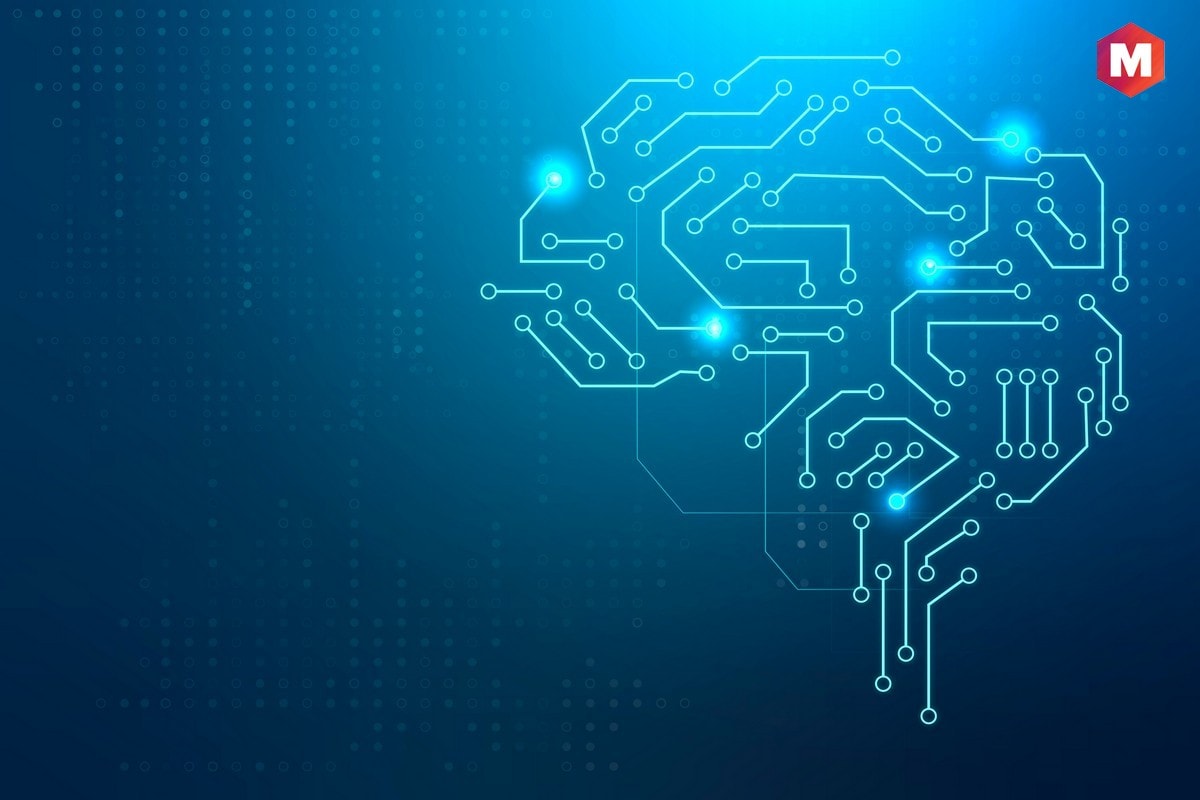
Exploring Collective Intelligence: Types, Differences, Benefits, and How to Harness it

Collective intelligence is the sharing of knowledge and skills by a large group of individuals It has numerous applications such as crowdsourcing and online collaboration tools It improves problem solving, decision making, creativity, efficiency, and innovation However, limitations include groupthink, lack of diversity, and difficulties in identifying expertise Principles of collective intelligence include acting globally, peering, openness, and sharing Technology plays a significant role in its development
The idea of collective intelligence refers to how a large group of people can come together to combine their knowledge, data, and abilities in order to tackle challenging issues or pursue fresh ideas. There are a variety of ways that collective intelligence can be applied, including through crowdsourcing, open innovation platforms, or online collaboration tools. Regardless of the specific approach used, the ultimate objective is to tap into the collective power of many individuals to solve problems and create opportunities that would be difficult or impossible for a single person to accomplish alone.
What is Collective Intelligence?
The power of collective intelligence lies in the ability to harness the diverse perspectives and expertise of a large group of individuals. Collaborative efforts can lead to innovative solutions and breakthrough ideas that may not have been possible with a single person's limited knowledge and experiences. By pooling resources and knowledge, collective intelligence can address complex issues that require a multidisciplinary approach. Ultimately, the practice of collective intelligence can lead to better decision-making and problem-solving outcomes.
The impact of collective intelligence on our world has been significant, as evident from the success of large-scale projects such as Wikipedia and the Human Genome Project. These initiatives harnessed the knowledge and data of numerous individuals to accomplish ambitious objectives. Linked collective intelligence, also known as collective intelligence theory, is an interdisciplinary field that examines collective cognition and action, incorporating theories from various disciplines such as sociology, psychology, anthropology, information science, and artificial intelligence. The term collective IQ refers to the intelligence of a group of people, which can be applied to teams, organizations, societies, and even species.
Intelligence as a Capacity and as Strategic Information
The power of a group to make superior decisions than any individual member is measured by collective intelligence (CI). It can also be described as the capability of groups to produce fresh knowledge and perspectives, exchange ideas and information, and resolve issues.
Many different factors contribute to collective intelligence, including:
Collective intelligence is greatly enhanced by the diversity of perspectives and opinions within a group.
Effective CI is dependent on open communication, active participation, and the sharing of knowledge and resources among members of the group.
Collective intelligence, a concept that has been present for centuries, gained significant attention in the late 1990s. Howard Gardner, a cognitive scientist, played a crucial role in bringing the concept to the mainstream by highlighting the limitations of IQ in describing individual intelligence and overlooking the collective intelligence of groups.
Nowadays, collective intelligence is widely acknowledged as a crucial element in solving complicated issues through the power of mass collaboration and human intellect. It facilitates the consolidation of a variety of human skills and knowledge, which is vital for handling intricate problems and enables effective group problem-solving.
History of Collective Intelligence
The idea of collective intelligence has been prevalent since ancient times, as seen in the examples from Greece. Aristotle, the Greek philosopher, had a belief that groups of individuals could be more intelligent than a single person, and this concept was later reiterated by the Roman statesman Cicero.
Pierre Teilhard de Chardin, a French sociologist, introduced the term "noosphere" to represent the collective intelligence of humanity in recent history. This idea gained further traction after Howard Bloom, an American author, wrote about it in his book The Global Brain: The Evolution of Mass Mind from the Big Bang to the 21st Century. The term "collective intelligence" was coined by American software engineer Tim O'Reilly in 1997 and has since garnered interest from scholars and professionals alike.
Applications of Collective Intelligence
1. Crowdsourcing
Harnessing collective intelligence can be incredibly beneficial in achieving specific goals. Some of the most popular applications of collective intelligence include crowd-sourcing, brainstorming sessions, and open innovation challenges. These methods allow for the pooling of ideas and resources from a diverse group of individuals, ultimately leading to more creative and effective solutions.Outsourcing tasks to a large group of individuals has become increasingly popular through online platforms and social media networks. This collaborative approach has been successfully implemented in various projects, including Wikipedia and open-source software development platforms such as GitHub.
2. Open innovation platforms
Tools or resources that encourage organizations to gather insights and suggestions from a broad audience, often beyond their own company, have become increasingly popular. Notably, InnoCentive has emerged as a leading example of how crowdsourcing can be used to solve business challenges. With a network of over 700,000 solvers from around the world, InnoCentive offers a platform to source innovative solutions.
3. Online collaboration tools
These are tools that allow groups of people to work together on projects or tasks online, often in real-time. Common examples include Google Docs, Trello, and Slack.
4. Social media networks
These are online platforms that allow users to connect with each other and share content or information. Common examples include Facebook, Twitter, and LinkedIn.
Collective Intelligence in the Workplace
Collaboration has become a game changer in the workplace, thanks to the rise of collective intelligence. This shift in approach has seen organizations increasingly embrace collaborative methods in order to achieve their goals. A study conducted by IBM revealed that a staggering 78% of respondents believed collaboration to be essential for business success. Moreover, over 70% of participants indicated plans to ramp up their investment in collaboration tools, with a focus on social software and unified communications.
By tapping into the collective intelligence of its workforce, organizations are experiencing a significant shift in the way they approach tasks and achieve objectives. This transformative impact is helping businesses to accomplish previously unattainable goals and operate more efficiently.
What are the benefits of Collective Intelligence?
Group intelligence or collective intelligence strongly contributes in so many ways-
1. Improved problem solving
By pooling together the knowledge and expertise of many individuals, it is possible to identify and solve problems more effectively.
2. Better decision making
The general collective intelligence factor can help organizations make better decisions by providing a wider range of perspectives and opinions.
3. Increased creativity
Collective efforts of group intelligence can lead to increased creativity as it allows for the exchange of new ideas and approaches.
4. Improved efficiency
By leveraging the power of many minds, businesses can achieve tasks and goals more quickly and efficiently.
5. Enhanced innovation
Collective intelligence can promote innovation by providing a forum for the exchange of new ideas.
What are the limitations of Collective Intelligence?
While collective intelligence has many benefits, there are also some potential limitations to consider, including:
1. Groupthink
When collaborating in a group setting, people tend to conform to the opinions and ideas of the group, even if those viewpoints may not be the most accurate or valid.
2. The “wisdom of crowds”
It is a common belief that a collective group can produce a more precise or dependable response than an individual. Nevertheless, studies have demonstrated that this is not always true, as groups may be influenced by the viewpoints of a vocal minority or "hive mind."
3. Lack of diversity
Groups that are homogeneous in terms of gender, ethnicity, age, etc. may not benefit from collective intelligence as much as more diverse groups.
4. Difficulties identifying expertise
It can sometimes be difficult to identify who has the most expertise or knowledge in a particular area, especially in large groups.
Don Tapscott and Anthony Williams’ Principles of Collective Intelligence
Theorists Don Tapscott and Anthony Williams have identified four key principles of collective intelligence:
1. Acting Globally
Collective intelligence is enhanced by diversity, as it allows for a wider range of perspectives and opinions.
2. Peering
Collective intelligence is enhanced by the sharing of knowledge and expertise.
3. Openness
Collective intelligence is enhanced by openness and the free exchange of ideas, information, and knowledge.
4. Sharing
mindful of potential challenges as well. One of the main challenges is ensuring that all team members have equal opportunities to contribute and share their knowledge and expertise. This requires creating a culture that values and encourages open communication and collaboration, as well as providing the necessary tools and resources to facilitate these interactions. Additionally, organizations must be prepared to manage conflict and differing opinions that may arise when individuals with diverse backgrounds and perspectives come together to solve problems and make decisions. Overall, successfully harnessing collective intelligence requires both a strategic approach and a commitment to fostering a culture of collaboration and inclusivity.
Collective intelligence holds great promise for businesses and organizations as a valuable resource for enhancing problem-solving, decision-making, creativity, efficiency, innovation, and more. However, it is equally important to recognize the potential drawbacks of this approach, including groupthink, the “wisdom of crowds”, lack of diversity, and the challenge of identifying expertise. A balanced and thoughtful approach is crucial in harnessing the full potential of collective intelligence.
By incorporating these considerations, organizations can effectively harness the potential of collective intelligence to attain their objectives and thrive in the dynamic and cut-throat business landscape of today.
Geoff Mulgan Five organizing Principles
Autonomous commons: Autonomous people are those who can express their thoughts and feelings without being hampered by ego, hierarchy, assumption, or ownership.
1. Balance
The degree to which the intelligence’s components are balanced and the extent to which the balance is suited for the demands of the job.
2. Focus
When you focus on what is essential, you avoid being sidetracked.
3. Reflexive
The ability to reflect on one’s thoughts and feelings in order to understand them better. The more reflexive a group is, the smarter it becomes in the long run.
4. Integrate for Action
Using a variety of data and techniques for making a decision.
Sources of Collective Intelligence
Collective intelligence can come from a variety of sources, including:
Social media platforms such as Facebook, Twitter, and LinkedIn
Online forums and discussion boards
Collaborative software such as Google Docs and Slack
Open innovation platforms such as InnoCentive and Innocentive
Crowdsourcing platforms such as Amazon Mechanical Turk and Upwork
Co-working spaces such as WeWork and Regus
Online communities such as Reddit and Quora
Collective intelligence has the potential to be a powerful tool for businesses and organizations.
How Technology Fits Into Collective Intelligence
Organizations must foster a culture of openness and collaboration to truly benefit from the use of technology in collective intelligence. It is also important to recognize that technology is a tool, and it is up to the people using it to ensure that it is used effectively and ethically.
Encouraging open communication, sharing resources, and fostering a culture of innovation and creativity are crucial in harnessing the power of collective intelligence. Although technology can aid in this process, it ultimately depends on the individuals within the organization to make it a reality. Finding the right balance between technology, collaboration, and effective communication is key to succeeding in today's fast-paced and competitive business environment.
Role of the Internet in Collective Intelligence
The growth of collective intelligence owes much to the Internet, which has made it easier than ever for individuals from around the world to connect and collaborate. A range of platforms now exist that are specifically designed to facilitate the sharing of ideas and the pooling of knowledge. Social media sites like Facebook, Twitter, and LinkedIn provide spaces where like-minded individuals can come together, while online forums and discussion boards offer a forum for debate and discussion. Tools like Google Docs and Slack allow teams to collaborate on projects in real-time, while open innovation platforms provide access to a global network of experts. Crowdsourcing platforms, meanwhile, enable people with diverse skills and talents to work together towards a common goal.
Collectively, these digital tools have revolutionized the way we interact, collaborate, and communicate, ushering in a new era of innovation and creativity. People from all walks of life are now empowered to contribute their unique ideas and expertise, paving the way for even greater advancements in collective intelligence. The future looks bright, so long as we continue to embrace technological progress and harness the power of collective intelligence for the greater good.
The role of collective artificial intelligence
Collective artificial intelligence (CAI) is an emerging field in collective intelligence research. It involves the creation of intelligent systems that can learn and adjust through input from a large group of individuals. The ultimate objective of CAI is to promote effective collaboration and communication in organizations, while empowering them to make informed decisions and tackle complicated challenges.
Various industries, including healthcare, education, disaster relief, climate change mitigation, and search and rescue operations, can benefit from the potential applications of CAI. To remain at the forefront of this technology, companies such as Google, Amazon, IBM Watson Health, DeepMind Health Group, and Buzzfeed are investing substantially in CAI research to explore novel and effective methods for leveraging collective intelligence.
The future of CAI is certainly exciting, and it will be interesting to see how this technology develops in the years to come.
Conclusion!
In today's fast-paced and competitive business environment, the utilization of collective intelligence has become crucial for solving complex problems and achieving success. This field of research explores how groups of people can work together to find solutions, which is commonly known as collective cognition or collective thought.
To harness the power of collective intelligence effectively, it is essential to strike a balance between technology, collaboration, and communication. Organizations that promote open dialogue, resource sharing, and a culture of innovation and creativity can leverage collective intelligence to achieve their objectives and yield tangible results.








